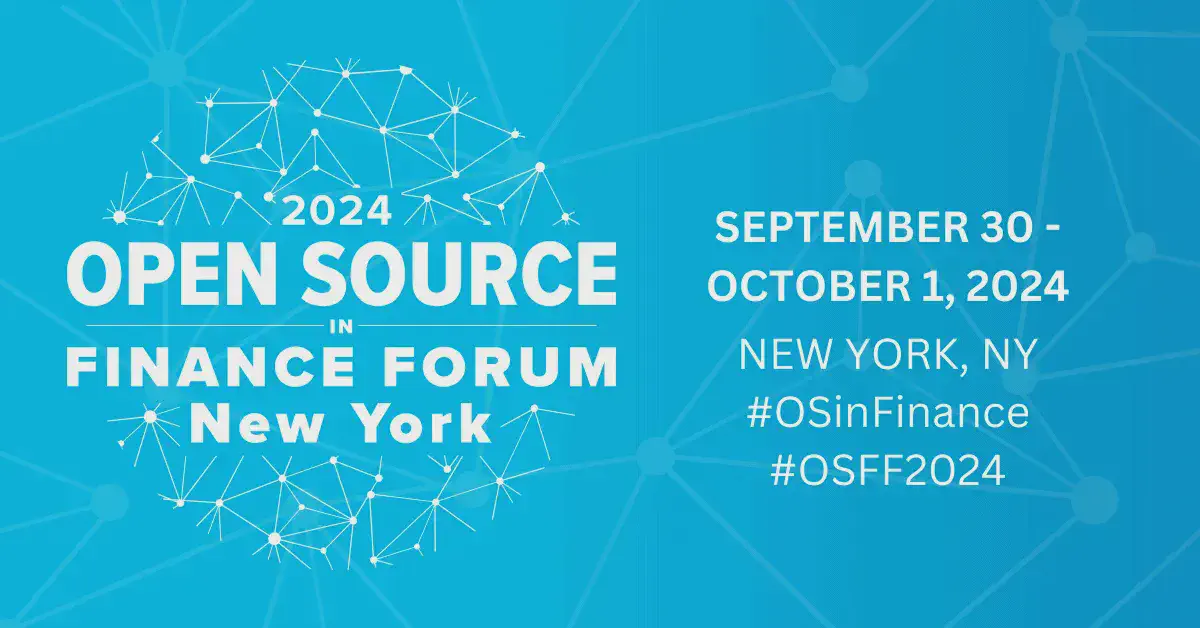Open Source in Finance Forum New York 2024 Recap

ControlPlane is a proud member of and long-term contributor to the Fintech Open Source Foundation (FINOS), and almost a third of our firm’s consultants contribute to initiatives like the AI Readiness SIG, Common Cloud Controls, and Compliant Financial Infrastructure.
It has been a pleasure to witness the Foundation’s exponential growth in 2024 and we like to think some of that was catalysed by our strong technical contribution and passion for the FINOS mission.
I recently attended the Foundation’s flagship fall event in New York, the Open Source in Finance Forum. I was excited to see so many high-calibre organisations have joined FINOS in the last six months and impressed to see how approachable their employees and representatives always are. I had some incredible conversations with representatives from new members, including BlackRock, NVIDIA, and G-Research, to name a few.
I tried to capture here a few highlights and takeaways from the conference, making sense of the whirlwind of keynotes, talks, meetings, and late-night conversations at the venue, in restaurants, and rooftop bars (thanks, Microsoft, for hosting!).
- Sustainable secure open source adoption at scale is still a major challenge for regulated industries, with unprotected software supply chains deemed one of the highest risk attack vectors.
- AI continues to dominate the conversation, but secure AI system safeguards and MLOps not so much. Organisations still struggle to harden their pipelines: ingesting, curating, and assuring data, training models and publishing them, and securely continuous deployment to production environments (see our blog post here for more details). Do we need in-toto and cryptographic signing for these models? For now, we have new FINOS member Protect.ai working to remediate that, and from a governance standpoint the excellent AI Readiness SIG, led by ControlPlane CEO Andrew Martin, published an AI Security Governance Framework.
- Selected representatives of participant organisations from the AI Readiness SIG were on stage for a panel discussion moderated by Andy Martin, with a deep dive into topics including AI safety, enterprise adoption at scale, and cross-border compliance challenges. Big thanks to Kim Jaffee-Prado (CIO @ BMO Capital Markets), Nehal Patel (ML Engineer @ G-Research), Prachi Kasodhan (Enterprise CTO @ Microsoft) and Johnna Powell (Head of Technology Research and Innovation @ The Depository Trust & Clearing Corporation (DTCC)) 🚀 for your availability.
- In other news, we won an award! More specifically, the 2024 FINOS Going All In Award.
- My talk with Andy Martin was very well received. Most acknowledged the importance of strategically aligning the cloud native adoption roadmap with the organisation’s business mission to avoid costly and risky disconnects. We delved into fine-tuning classic security disciplines, like Threat Modeling and Security Engineering, specifically for the cloud native environment, leveraging its core principles: automation, interoperability, declarative configuration and reconciliation, and “everything as code.”
- In a separate session Andy Martin delivered his Securing Your AI Project: From Guidelines to Practical Implementation, with key learnings and practical recommendations from his involvement with the AI Readiness SIG.
- Our booth was always busy, and by far, the most desirable swag was our pack of Cloud Native Flashcards.
In between all of our talks, we also managed to meet a few current and prospective customers. It is always lovely to meet in person rather than at the opposite ends of a virtual meeting.
Overall, it is safe to say FINOS is charting the course that defines open source adoption in the FSIs vertical. It’s an even bigger pleasure to see how the foundation is growing under the astute leadership of a fellow Italian gentleman, Executive Director Gabriele Columbro. Keep up the good work, Gab (and team)!
Drive a Secure, Scalable Future in FSIs
If you’re passionate about open source and building secure, resilient systems within your FSI, now is the time to get involved with FINOS. Whether you’re advancing cloud native capabilities, strengthening incident response frameworks, or tackling AI governance challenges, the FINOS community can definitely provide the resources, expertise, and partnerships you need. Please also connect with us to know more about our offerings and see how we can support your organisation’s journey.
Related blogs

Out on the GenAI Wild West: Part I - Red Team Redemption

See it, Hack It, Sort It: How Open Source Software Protects Our AI Enablers

